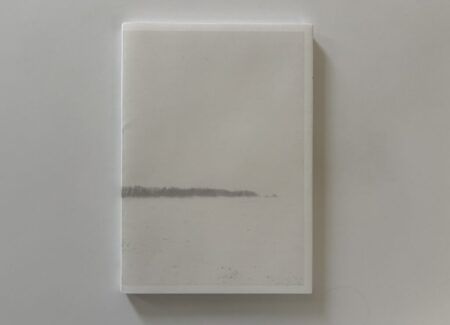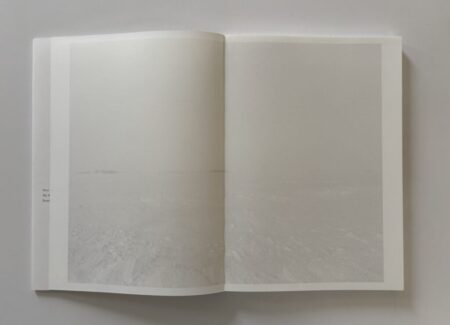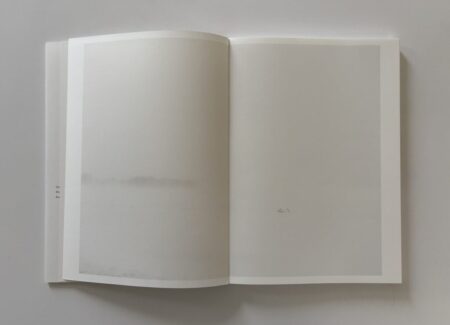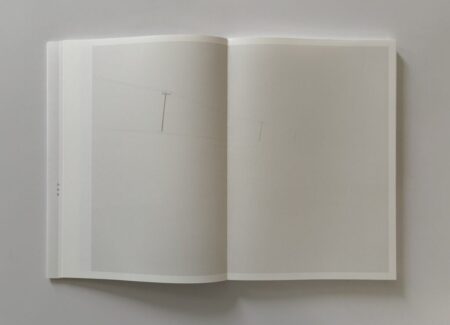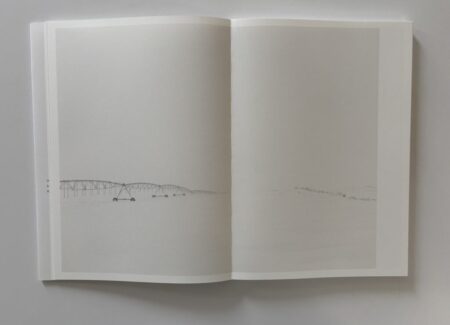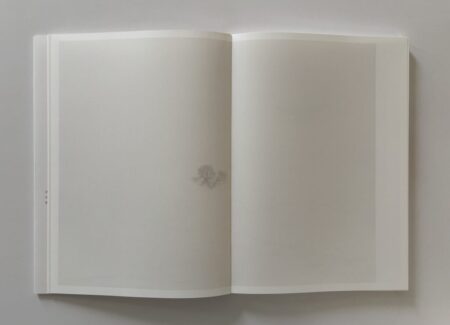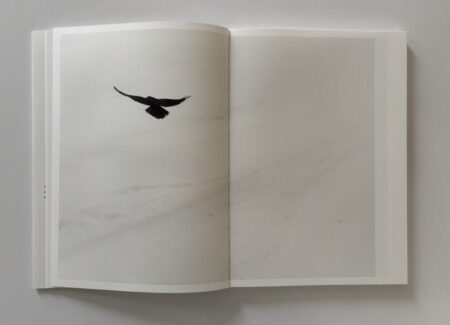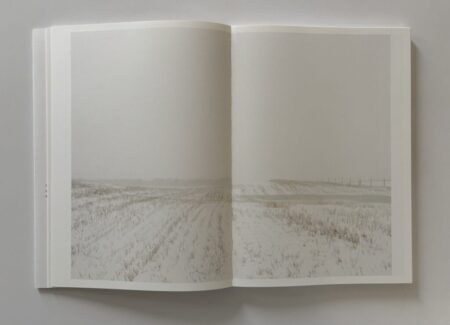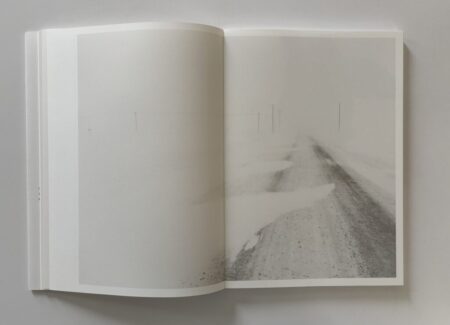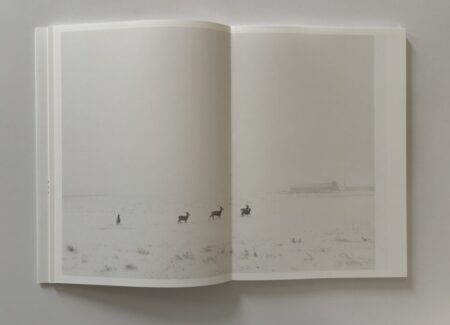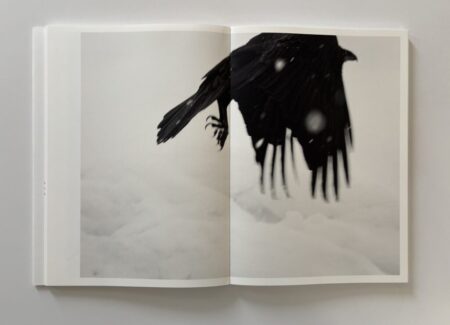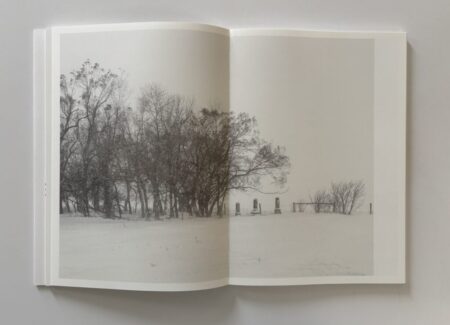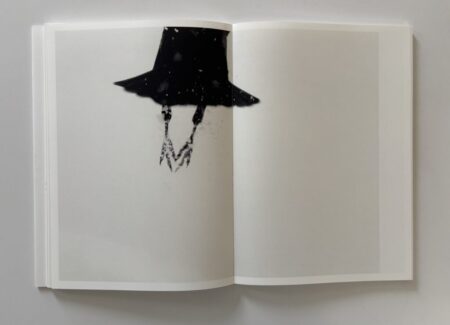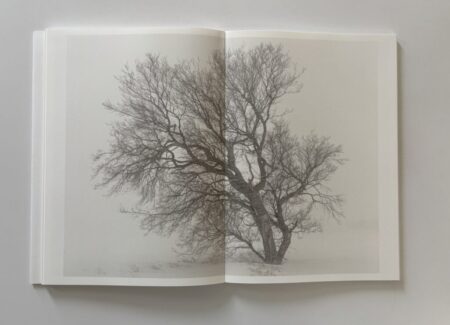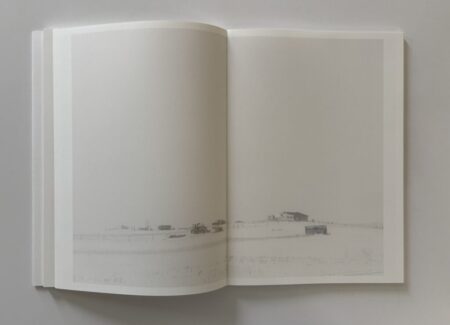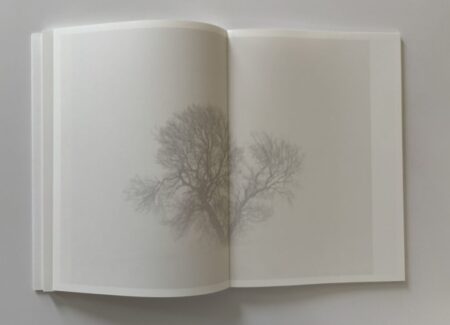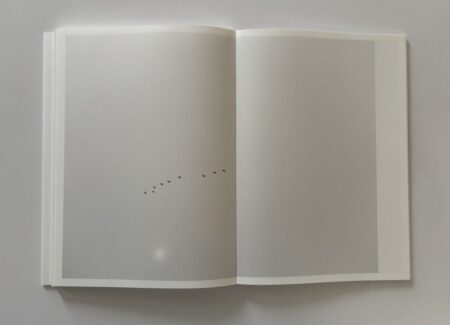JTF (just the facts): Published in 2024 by Hartmann Books (here). Hardcover (24 × 34 cm), 112 pages, with 55 illustrations. Includes essays by Daniel Blochwitz, Brad Zellar, and the artist. Design by Akiko Wakabayashi. In an edition of 800 copies. (Cover and spread shots below.)
Also available in a special edition (here). This version includes a book and comes with a archival pigment print (30 x 40 cm). In an edition of 20+2AP, signed and numbered.
Comments/Context: The Canadian photographer Angela Boehm took up photography at a later stage in her life, and her practice is “inspired by the inevitability of mortality, highlighting the rhythms of nature and the intangible qualities of memory.” Her first photobook, titled Minus 30, was released at the end of last year, and focuses on the experience of deep winter. Boehm grew up on a farm in rural Saskatchewan with two brothers, and winters were an indelible part of their youth. In 2021, she went back with her medium format digital camera to photograph the snowstorms there, and she made a rule to only take photographs at minus 30 degrees Celsius or colder. Boehm says that these dangerous conditions made driving arduous, as the roads were often closed and she was completely alone, yet the familiarity of the storms made her feel safe. The resulting work is haunting and beautiful.
As a photobook, Minus 30 has a relatively straightforward design, yet all its elements – paper, layout, cover – are there to reinforce the immersive experience of Boehm’s images. It is a hardcover book with a jacket, featuring a cover image of a snowy landscape, mostly white, that feels like a drawing, setting our expectations for the coming visual narrative. Inside, the photographs are printed the same size and appear in the same position on every spread with a thin white border around them, the margins slightly shifting. The book also easily opens flat, making the interaction pleasant. There are no page numbers or captions, directing our entire attention to the photographs, and the texts by Daniel Blochwitz, Brad Zellar, and the artist appear at the very end, closing the book.
The heavy snowstorms hide nearly anything that appears in front of the photographer, leaving us mostly to guess and imagine. The opening photograph might as well serve as a metaphor for winter – it is so endlessly white, it takes a moment for your eyes to get adjusted to it, and see the additional details of snow texture, tiny crusts of snow, and darker areas in the background, most likely distant structures or trees. The white border around the image offers contrast to the subtle tonalities of the picture. The following photograph appears as white, yet very different, this time we notice a tiny bunch of grass sticking out of the windswept snow. Another shot reveals the disappearing contours of power lines and poles, in an otherwise absolutely white scene. A tree appears in the middle of another image, and without any other references for a scale, it is hard to estimate its size. This tree repeats and becomes larger throughout the book, perhaps as a symbol of resilience in the storms.
After this powerful and haunting introduction to snowstorm landscapes, the images start to reveal more detail, taking us deeper into the storm. A bold black crow breaks the snowy visual narrative with its presence and it will appear again in various instances. In other shots an abandoned house stands in the middle of nowhere, irrigation equipment lines in an empty field, deers run in snow, birds fly over the stubble of a shorn field, a school bus passes through the whiteout etc. And then the single tree reappears, taking up the entire frame, standing strong in the snowy conditions.
Consistently, snow and white sky dominate the images. And perhaps unsurprisingly, there are no people in these cold photographs, yet we know people live in the area as there are homes and elements of infrastructure, adding to the feeling of loneliness and desolation. In this way, Boehm’s photographs transcend a sense of solitude, meditation, and even melancholy, and this aspect of Boehm’s work brings to mind Ichiro Kojima’s photographs of harsh winter in Hokkaido in 1963, recently published in the photobook Solitude Standing (reviewed here).
Boehm notes that “the frozen prairie landscapes, while a subject in their own right, serve as a powerful metaphor for the deeper themes the book explores: loss, memory, and resilience.” For her, the emptiness and biting cold embody the loss, while memory is present through the softening and blurring the scenes. And the solitary tree that appears throughout the book represents resilience.
While working on the project Boehm also considered how much winter has changed over the decades, becoming less heavy compared to the ones she remembers from her own childhood, and the black crow that appears throughout the book signals that concern. While Boehm’s book is based on a rather simple idea, the result is truly captivating. The format of the Minus 30 encourages slow looking, pulling us in an arrestingly entrancing visual flow of photographs, and the series is also an elegantly expressive ode to Boehm’s native land and its people. In the end, Minus 30 is an understated but compelling photobook object, one that feels more subtle and engaging than the harsh conditions seem to offer.
Collector’s POV: Angela Boehm does not appear to have consistent gallery representation at this time. Collectors interested in following up should likely connect directly with the artist via her website (linked in the sidebar).
